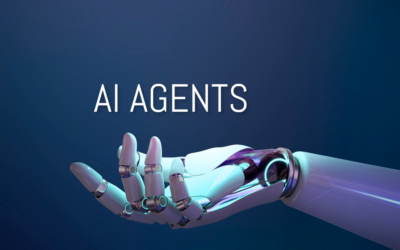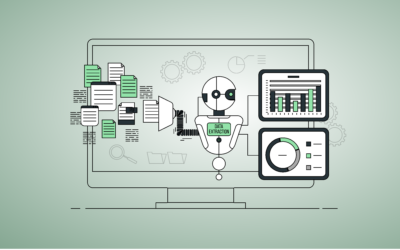Table of Content
When planning the development of your generative AI applications and using LLMs, stakeholders must consider certain challenges and practices. As the organization adopts and integrates the technologies into its operations, it is important to secure and monitor AI/ML systems. It’s vital to create applications and implementations that are secure and trusted by users.
Organizations building reliable AI systems must develop a defense against new threats and prepare specific responses and solutions for these challenges. Understanding threats and adopting privacy, security, and governance practices should be part of their AI strategy. We have prepared a list of vulnerabilities organized into categories to help understand and address the different aspects of LLM security and mitigation strategies.
At Krasamo, we help clients assess and ensure the alignment of their business processes with AI technologies. Our team of engineers has expertise in building generative AI applications and is available to explore use case-specific operations and deployment strategies.
Core Vulnerabilities in Large Language Models (LLMs)
Understanding the core vulnerabilities in large language models (LLMs) is crucial for developing secure and reliable AI systems. These vulnerabilities span various aspects of LLM applications, from input manipulation to data integrity and access control. Addressing these vulnerabilities can help mitigate risks and ensure AI technologies’ ethical and safe deployment.
Vulnerabilities are weaknesses or flaws in a system, software, or process that a threat actor can exploit to cause harm or gain unauthorized access. Risks are potential loss, damage, or harm from exploiting a vulnerability. Risk is a combination of the probability of a threat exploiting a vulnerability and the impact of the exploitation.
Input Manipulation
Vulnerability: The ability of an AI system to be manipulated by crafted inputs.
Techniques:
- Prompt Injection: Manipulating input prompts to inject malicious instructions.
- Model Tricking: Crafting inputs to trick the model into generating specific, often malicious, outputs.
Architectural and Design
Vulnerability: Flaws in the design or architecture of the system.
Techniques:
- Insecure Plugin Design: Poorly designed plugins introduce vulnerabilities.
- Remote Code Execution: Exploiting vulnerabilities to execute arbitrary code on the host system.
Data and Model Integrity
Vulnerability: Issues related to the integrity and handling of data and models.
Techniques:
- Model Poisoning: Corrupting the training data or the model to degrade performance or introduce vulnerabilities.
- Improper Data Handling: Mishandling data during training or inference leads to privacy breaches and security issues.
- Model Theft: Theft of the trained model leads to intellectual property loss and unauthorized use.
Output and Behavior
Vulnerability: Issues related to the outputs and behavior of the model.
Techniques:
- Hallucinations: Generating incorrect or misleading information due to gaps and flaws in the training data.
- Sensitive Information Disclosure: Inadvertently leaking sensitive or confidential information.
- Bias and Stereotypes: Propagating biases and stereotypes present in the training data.
- Process Manipulation: Manipulating processes involving LLMs to achieve malicious goals.
Access and Control
Vulnerability: Weaknesses in access control mechanisms.
Techniques:
- Unauthorized Access: Poor access control mechanisms allow unauthorized users to access or manipulate the model.
- Voice Cloning and Impersonation: Using LLMs to clone voices or impersonate individuals.
Supply Chain and Infrastructure
Vulnerability: Risks associated with the supply chain and infrastructure.
Techniques:
- Supply Chain Attacks: The model supply chain vulnerabilities include compromised training data or third-party components.
- Data Loss Protection (DLP): Inadequate measures resulting in unauthorized access to or loss of sensitive data.
AI developers work with clients by analyzing these vulnerabilities and the types of risks associated with LLMs and implementing targeted security measures and mitigation strategies.
Understanding AI Risks
AI risks differ significantly from traditional software risks due to several unique factors inherent to AI systems [1]. Traditional software typically operates with fixed rules and predictable behaviors, whereas AI systems are dynamic, data-driven, and often operate probabilistically. Here are some key distinctions:
1. Data Dependency and Quality: AI systems heavily rely on large datasets for training, and the quality and relevance of this data are crucial. Poor quality, outdated, or biased data can significantly affect AI performance, leading to trustworthiness issues and negative impacts. Unlike traditional software, where code determines functionality, AI systems can change behavior based on new data inputs, making them less predictable.
2. Complexity and Scale: AI models, especially large-scale ones, contain numerous parameters and decision points, making them inherently complex. This complexity can result in emergent behaviors that are difficult to predict and manage (non-deterministic). In contrast, traditional software is generally simpler and more deterministic.
3. Dynamic Nature: AI systems can adapt and evolve through learning from new data, leading to potential changes in behavior and performance. Traditional software does not typically have this capability and remains static unless explicitly updated by developers.
4. Openness and Transparency: AI models often lack transparency, making it difficult to understand and explain their decision-making processes. This opacity can complicate risk assessment and management. Traditional software usually has clearer, more transparent logic paths.
5. Testing and Validation: Traditional software testing methods are not always applicable to AI systems due to their probabilistic nature and dependency on data. AI systems require different testing approaches for output variability and performance under diverse conditions. Learn more about Software Testing and Automation with Large Language Models
6. Privacy and Security: AI systems pose heightened privacy risks due to their data aggregation capabilities. They also face unique security threats, such as model inversion, membership inference attacks, and data poisoning, which are less prevalent or non-existent in traditional software.
These differences necessitate specialized risk management frameworks and practices tailored to AI systems’ unique characteristics to ensure their reliability, safety, and ethical use.
Red Teaming for Identifying Vulnerabilities
Red teaming is an adversarial testing method designed to identify and validate vulnerabilities in AI systems. It is essential for ensuring the safety and security of LLM applications, helping to uncover specific vulnerabilities that may not be apparent through traditional benchmarking and testing methods. Red teaming should be used with other testing, evaluation, verification, and validation forms to address all potential real-world harms associated with AI systems comprehensively.
Manual and Automated Red Teaming:
- Manual Red Teaming: Involves manually probing LLM applications to identify vulnerabilities through techniques such as prompt injections and evaluating system responses to adversarial inputs.
- Automated Red Teaming: This method uses tools and scripts to automate finding vulnerabilities, making it more efficient and scalable. Example tools include the G-score, which automates prompt injections and the detection of successful injections.
Red Teaming Techniques:
- Prompt Injection Techniques: Crafting specific inputs to manipulate the LLM to generate desired outputs. Examples include simple prompt manipulations and more complex structured prompts to bypass safeguards.
- Adversarial Input Generation: This technique uses LLMs to generate adversarial inputs likely to cause the system to fail or produce inappropriate responses. It focuses on generating inputs that can expose biases or discriminatory behavior.
- Rule-Based Detection: Implementing rule-based systems to detect successful prompt injections. This involves defining specific strings or patterns to look for in the outputs to determine if an injection was successful.
- Scalability and Automation: This section emphasizes the importance of making red teaming scalable and repeatable through automation. This involves using libraries of predefined attacks and automated detection methods to streamline the process.
- Full Red Teaming Exercise: Includes initial observation, identification of major vulnerabilities, and exploitation. A structured approach to red teaming involves multiple rounds of testing, updating focus areas, and refining strategies based on initial findings.
Layered and Diverse Approach:
- Diverse Red Team Composition: Assemble a diverse group of red teamers with expertise in AI, cybersecurity, social sciences, and other relevant fields.
- Layered Testing: Conduct testing at several layers, including the base model and the application, before and after mitigations are in place. This layered approach ensures comprehensive coverage of potential vulnerabilities.
Open-Ended and Guided Testing:
- Open-Ended Testing: Conduct open-ended testing to uncover a wide range of harms. Encourage red teamers to explore creatively and document any problematic content.
- Guided Testing: Use guided testing to focus on specific known issues. Create a list of harms from open-ended testing to guide subsequent rounds of red teaming.
Outsourcing a red team is advantageous due to their specialized expertise, objective perspective, and ability to identify more vulnerabilities. They help demonstrate higher standards of care, manage legal considerations, and focus intensive testing on high-risk models, ensuring AI system security and reliability without overburdening internal resources.
By integrating these detailed techniques into the revised section, the document will provide a thorough understanding of the various methods and strategies involved in effective red teaming for LLM applications.
Integrating AI Security with Governance and Legal Frameworks
As organizations increasingly adopt AI technologies, integrating AI security with existing governance and legal frameworks is critical. This integration ensures a holistic approach to managing AI risks and aligning AI initiatives with organizational policies, regulatory requirements, and best practices. Here’s how to effectively incorporate governance and legal considerations into AI security strategies:
Importance of Integration
Integrating AI security with existing governance and legal frameworks helps organizations manage AI risks comprehensively. It ensures that AI systems are technically secure, compliant with legal standards, and aligned with organizational policies. This holistic approach mitigates potential risks and enhances AI applications’ reliability and trustworthiness.
Clear Governance Structures
Establishing clear governance structures is essential for managing AI risks effectively. This includes defining roles and responsibilities, setting up oversight committees, and ensuring accountability throughout the AI lifecycle.
- AI Governance Committee: Form an AI governance committee comprising stakeholders from various departments, including IT, legal, compliance, and business units. This committee should oversee AI initiatives, review risk assessments, and ensure alignment with organizational policies.
- Role Definitions: Clearly define roles and responsibilities for AI development, deployment, and monitoring. This includes assigning specific tasks to data scientists, developers, IT security personnel, and compliance officers.
- Accountability and Oversight: Implement accountability mechanisms to ensure all stakeholders adhere to governance policies. Regular audits and reviews should be conducted to assess compliance and address any deviations.
Legal Agreements and Compliance
Legal agreements and compliance measures are crucial for managing the risks associated with AI systems. This includes ensuring that AI applications adhere to regulatory requirements and that appropriate legal protections are in place.
- Regulatory Compliance: Ensure AI systems comply with relevant regulations and standards, such as the EU AI Act, GDPR, and industry-specific guidelines. Regularly update compliance practices to reflect changes in the regulatory landscape.
- Legal Agreements: Draft and review legal agreements related to AI use, including end-user license agreements (EULAs), data protection agreements, and intellectual property rights. These agreements should clearly outline the responsibilities and liabilities of all parties involved.
- Data Protection and Privacy: Implement robust data protection measures to safeguard personal and sensitive information used by AI systems. This includes data anonymization, encryption, and access controls to prevent unauthorized access and ensure compliance with privacy laws.
- Intellectual Property Management: Ensure that the intellectual property generated by AI systems is adequately protected. This includes securing patents for AI innovations and ensuring that the use of third-party data and models complies with licensing agreements.
Integrating Governance with AI Security Practices
Integrating governance and legal considerations into AI security practices involves several key steps:
- Policy Development: Develop comprehensive AI policies incorporating security, governance, and legal considerations. These policies should outline the organization’s AI development, deployment, and monitoring approach.
- Training and Awareness: Conduct regular employee training sessions on AI security, governance, and legal compliance. This ensures all stakeholders know their responsibilities and the importance of adhering to established policies.
- Continuous Monitoring and Improvement: Implement continuous monitoring mechanisms to track the performance and compliance of AI systems. Use feedback from monitoring activities to improve AI policies and practices continually.
- Collaboration and Communication: To ensure a coordinated approach to AI security and governance, Foster collaboration between IT, legal, and business units. Regular communication and information sharing help identify and address potential risks more effectively.
By integrating AI security with governance and legal frameworks, organizations can manage AI risks more effectively and ensure that AI applications are secure, compliant, and aligned with organizational goals.
As the adoption of AI technologies accelerates, organizations must proactively address the security and governance challenges associated with large language models (LLMs). Organizations can mitigate risks, ensure compliance, and build trust in their AI applications by integrating robust AI security measures with comprehensive governance and legal frameworks. Reach out to our team of AI experts at Krasamo in Dallas to learn about our AI development services.
References and Further Reading
[1] Artificial Intelligence Risk Management Framework (AI RMF 1.0)
[2] LLM AI Cybersecurity & Governance Checklist
[3] How to Red Team a Gen AI Model












